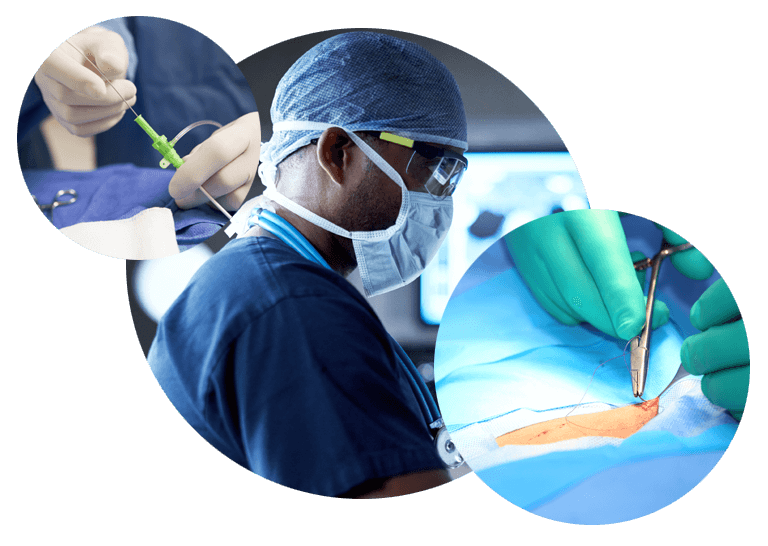Inguinal Hernia
What are the symptoms of a groin hernia?
Groin hernias do not always cause symptoms. But when symptoms do occur, they can include:
- A heavy or tugging feeling in the groin area
- Dull pain that is worst when straining, lifting, coughing, or otherwise using the muscles near the groin
- A bulge or lump at the groin
Hernias can be very painful and even dangerous if the tissue in the hernia becomes trapped and unable to slide back into the belly. When this happens, the tissue does not get enough blood, so it can get damaged or die. This is more likely with femoral hernias than with inguinal hernias.
Should I see a doctor or nurse?
Yes. See a doctor or nurse if you:
- Feel or see a bulge in your groin, or
- Feel a pulling sensation or pain in your groin even if you have no bulge
In most cases, doctors can diagnose a hernia just by doing an exam. During the exam, the doctor will ask you to cough while pressing on the bulge. This can be uncomfortable, but it is necessary to find the source of the problem.
Most of the time, the contents of the hernia can be “reduced,” or gently pushed back into the belly. Still, there are times when the hernia gets trapped and can’t be pushed back in. If that happens, the tissue that is trapped can get damaged.
If you develop pain around the bulge or feel sick, call your doctor or surgeon right away.
How are hernias treated?
Not all hernias need treatment right away. But many do need to be repaired with surgery. Femoral hernias, in particular, usually need repair. They are more likely than inguinal hernias to cause tissue damage.
Surgeons can repair groin hernias in 1 of 2 ways. The right surgery for you will depend on the size of your hernia, whether this is the first time it is getting repaired, and what your general health is like. The 2 types of surgery are:
- Open surgery – During an open surgery, the surgeon makes an incision near the hernia. Then he or she gently pushes the bulging tissue back into place. Next, the surgeon sews the weak tissue layer back together, so that nothing can bulge through. In some cases, surgeons will also patch the area with a piece of mesh. The mesh can take some of the strain off the tissue wall. That way the hernia is less likely to happen again.
- Laparoscopic surgery – During laparoscopic surgery, the surgeon makes a few incisions that are much smaller than those used in open surgery. Then he or she inserts long thin tools into the area near the hernia. One of the tools has a camera (called a “laparoscope”) on the end, which sends pictures to a TV screen. The surgeon can look at the picture on the screen to guide his or her movements. Then he or she uses the long tools to repair the weak tissue layer either with stitches alone or with mesh.
If your hernia has reduced the blood supply to a loop of intestine, your doctor might need to remove that piece of intestine and sew the 2 ends back together.
The recovery and aftercare for each type of hernia repair is different. Your doctor or nurse can tell you what to expect after your surgery.

